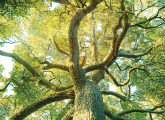Grow a sunflower, make a volcano, then open a ‘cosmic museum’ – and much more with these ideas from Judith Harries…
Download your free ‘Show and Tell’ activity sheets here.
Organise a ‘show and tell’ time using Rob Biddulph’s book as a guide. Emphasise that it’s not a competition to bring in the most impressive item! Reassure children that they’ll all have a turn to show their choice to the group. Try to relate the activity to a current topic – so if you’re exploring colours, invite children to bring in something red on ‘Red Day’, or if you’re talking about families, invite them to bring in a photo or artefact related to their family. Introduce a ‘matchbox show and tell’ and challenge children to bring in something small that fits inside a matchbox!
Give each child a sunflower seed to plant in a pot of moist compost. Show them how to push their finger into the soil, then drop the seed in and cover it with soil. Place the pots on a windowsill so they get lots of sunlight. Keep the seeds watered, watch and wait. Let children record any changes on their ‘My Sunflower Diary’ activity sheet. Children can take their plant home once it’s started to grow. Alternatively, plant the seedlings outside and see which grows the tallest.
If children are getting impatient, watch this time-lapse film showing sunflower seeds germinating and growing in a 10-day period. Or for a cautionary tale, read Jasper’s Beanstalk by Nick Butterworth.
In the story, each successive child brings in something more impressive (and often bigger) to show the class. Use this as a stimulus for some measuring activities. Provide children with a selection of different objects to sort into size order. These can be taken from the book (see pages 12 and 13) or related to a current topic. Introduce different resources for children to measure items, such as rulers, tape measures, metre sticks and scales. Challenge them to sort the items from smallest to biggest or lightest to heaviest. Download the ‘Which is the biggest?’ activity sheet for more size-sorting fun.
Sit in a circle with the children. Share the book together and ask children to indicate when they think they hear a pair of rhyming words by raising a hand. Make a list of some of the rhyming pairs such as ‘eyes – prize’, ‘indeed – seed’, ‘bunch – lunch’ and ‘stamp – lamp’. Some of the rhymes are more unusual such as ‘distance – existence’ and ‘later – alligator’. Can the children think of more words that rhyme with each word? Try with ‘okay – today’ or ‘sun – fun’ and see how long a chain you can make. Let children record some of their rhymes on the ‘My rhyme chain’ activity sheet.
Xanthe brings in a volcano, which almost wins the prize. Try making one with the children – they won’t believe their eyes! Children can help build the volcano using a cardboard cone and layers of papier mache. Paint the finished shape brown and black. Put 2 tablespoons of bicarbonate of soda into a plastic bottle (using a funnel) or jar. Mix in ½ teaspoon of salt and some red and yellow food colouring. Add 2 generous squirts of washing-up liquid. Place the volcano cone over the top of the bottle. Pour in some vinegar until the volcano erupts! Make sure you have a camera ready to film the children’s reactions.
Zorg the Explorer gathers all the show and tell items together and tows them away to his cosmic museum. Invite children to dress up as some of the different items (Charlie wearing his hat, Holly’s robot, Oliver’s spacesuit, Rebecca’s alligator, the Queen of Denmark, and the Loch Ness monster, etc.) or draw/make models of others (Eddie’s plant, Florence’s sandwich, Isaac’s painting, Quinn’s car, Silvio’s spaceship, Violet’s Big Ben, Yao’s moon, etc.) and open a cosmic museum in your setting. Let the children display their costumes/models in a cosmic parade and use drama skills to get inside their characters!
Mr Lumsden awards the show-and-tell prize to Adam for his sunflower seed. Can the children guess what’s inside the prize before Adam unwraps it (see page 7)? Try wrapping some items in colourful wrapping paper for the children to guess what’s inside. Use the ‘What’s inside the prize?’ activity sheet to identify some other items from the story just from their shape.
Bite-size ideas
Line up!: Ask children to line up as quickly as they can in height order. Start with the smallest child and ask a sensible child to check as each child lines up. You may need to referee first time round!
Blue spaghetti: Cook some spaghetti al dente, then rinse. Toss in some blue food colouring and place in the tuff spot for children to enjoy some messy play.
A to Z: Look at the ‘hidden’ A to Z in the book (children’s names). Sit in a circle and invite children to think of a word beginning with each letter of the alphabet. Make it harder by relating it to a topic – animals or food.
Build Zorg: Let children use playdough, pipe cleaners, lolly sticks, googly eyes, etc. to create their own model of Zorg the Explorer or another alien.
Exploring space: Use the book as stimulus for finding out about space, including the moon, eclipses, sun, Alpha Centauri and more.
A game of cat and mouse: Challenge children to spot all the cat and mouse pictures hidden on the pages.
The activities in this article are inspired by Show and Tell, the funny and fantastic new picture book from award-winning and bestselling creative star Rob Biddulph and HarperCollins Children’s Books!

Immerse yourself in nature
Editors picks
